Safety & Security
Scroll Down
Keeping on Thinking About How to Preserve Lives and Assets
People first built homes to protect themselves physically from harsh natural environments. Safety and peace of mind are the most fundamental themes demanded from buildings. Peace of mind can be summarized as “a state in which one can expect to encounter no hazards,” but as humans have advanced, we have been able to foresee many diverse hazards, so our anxiety expands, and it appears to have become difficult to achieve peace of mind. The scale of natural disasters is gradually growing, perhaps due to climate change, and human disasters due to crime know no bounds. It will take knowledge and technology to constantly anticipate new hazards, and to control risks down to tolerable levels.
CATEGORY
Actions to be prepared for natural disasters and crime and to build up relief
Conversely to risk dispersion, the pursuit of everyday efficiency has led the working population in Tokyo to eight million. When a large disaster hits this highly dense city, transport, distribution, and infrastructure will be ceased or damaged, where many people will be left in buildings, and in some situations they will need to continue with their work duties.
Until recently preparing emergency storages for three days against infrastructure outage was the common thoughts, but now, some public authorities are extending it to seven days . The situation increasingly demands planning to sustain buildings and districts even if some urban functions are impaired for long periods by a large-scale natural disaster, so that people will be able to get back to normal daily lives quickly.
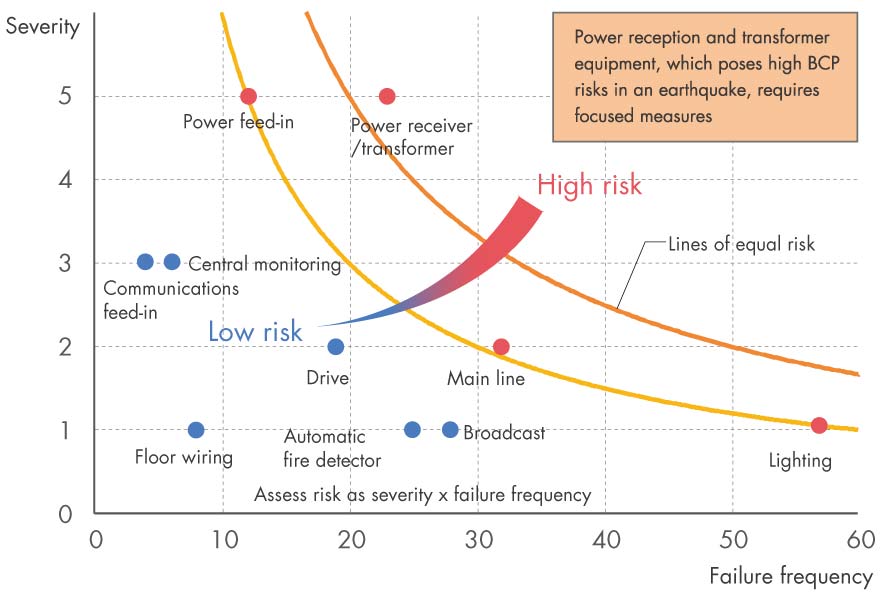 Example of Assessment of Earthquake Disaster Risks in Electrical Equipment
Example of Assessment of Earthquake Disaster Risks in Electrical Equipment
When a specific piece of equipment malfunctions or fails, a simple risk analysis is available by multiplying the degree of impact on buildings by the frequency of the malfunction or failure.
Equipment in electrical substations that may be significantly damaged due to a malfunction or failure is secured to floors as countermeasures against earthquakes.
However, since a transformer, which is one of the components, is very heavy and has a self-supporting structure, breakage and ruptured joints may occur as a result of the shaking of an earthquake, an indication that risks cannot be prevented through seismic reinforcement alone.
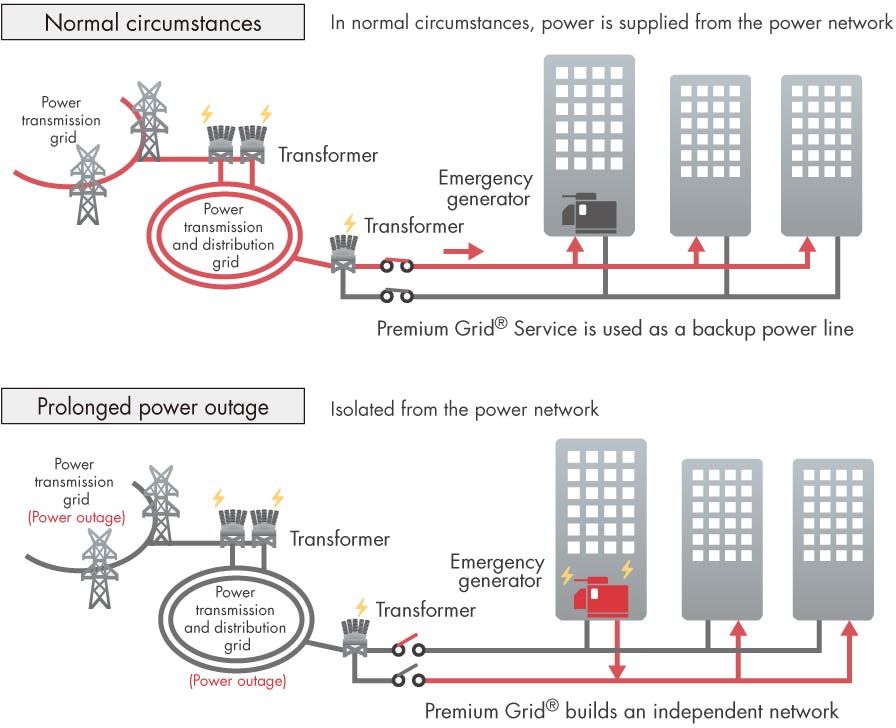 Sharing Emergency Power Supplies with Other Buildings Through Power Company’s Power Distribution Lines (Premium Grid® Service (Note))
Sharing Emergency Power Supplies with Other Buildings Through Power Company’s Power Distribution Lines (Premium Grid® Service (Note))
Power companies are installing new backup power lines between multiple buildings within specific areas, so that in a power outage due to a disaster etc., networks can be isolated by being cut off from power company transmission and distribution networks to stand independently. This arrangement makes it possible to share power from emergency generators installed in the buildings in the network, contributing to stronger BCP measures and disaster prevention within the area. Nikken Sekkei has been aware of the necessity, and has led and provided design backups to realize the system.
Note: Premium Grid® is a registered trademark (No. 5908846) of the Tokyo Electric Power Company Holdings, Inc. who obtained a patent for Power Supply System and Power Supply Method (Patent No. 6520773).
Important Information Must be Protected from Human Disasters
Human vigilance is essential against human disasters, and that is achieved by severely restricting the movement of people in and out of important facilities. In facilities such as large corporate headquarters, large numbers of people, including guests, move in and out as well as company employees, so additional equipment-based measures are deployed to make vigilance more efficient. Installation of security gates and additional monitoring cameras, early discovery of suspicious persons by motion detectors, and other measures tend to be more advanced where there is greater movement of the general public in and out.
Even now, new measures are being deployed, such as AI used to discover suspicious behavior, and beacons to track building occupants, but diverse solutions for identifying occupant behavior applying technical developments such as smart watches and other wearable devices are expected to emerge with greater speed than building equipment advances. But for people who have no malicious intent, being monitored and tracked can only feel like a burden. As such measures proliferate, there will be parallel demand for the provision of services, based on the same systems, to make it more convenient for everyone to use building facilities on a daily basis. Therefore, we anticipate that the situation will stimulate collaboration between building designers who are well aware of how buildings are used, the knowledge of building operators, and the skills of ICT engineers.

Fully Automatic Validation for Building Fire Evacuation
-
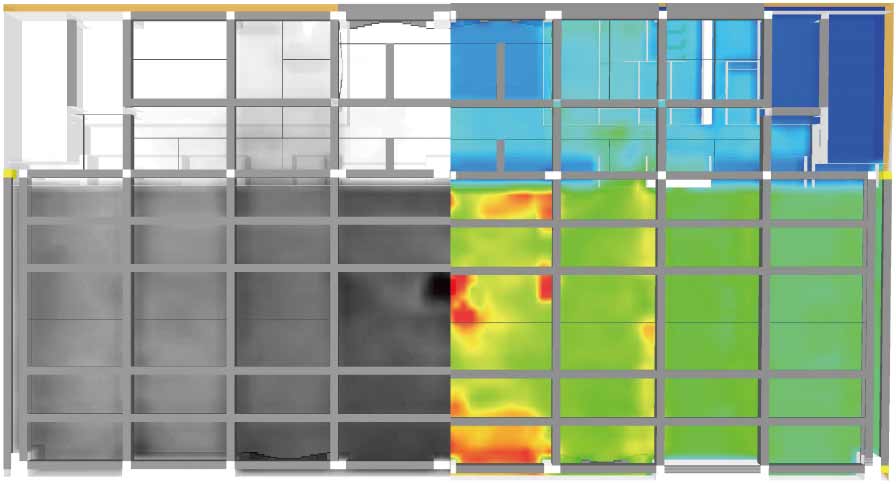 Smoke and temperature distributions calculated by FDS
Smoke and temperature distributions calculated by FDS
-
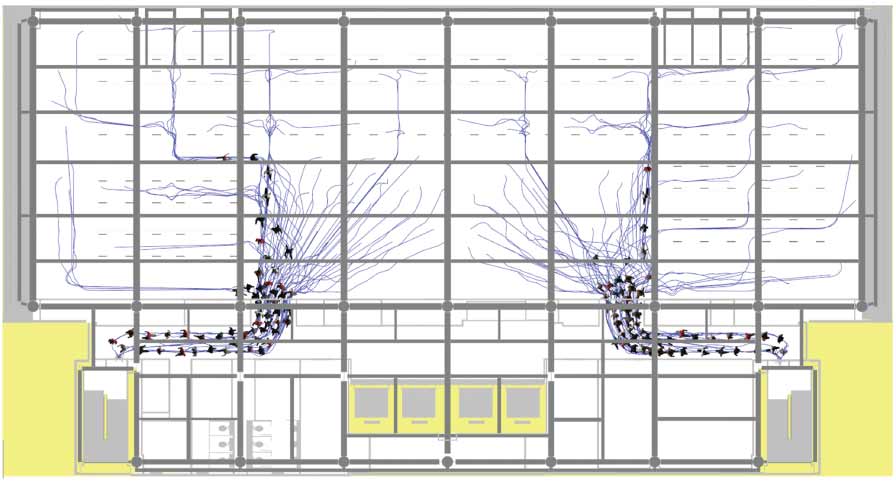 Distribution of evacuation migration calculated by Path Finder
Distribution of evacuation migration calculated by Path Finder
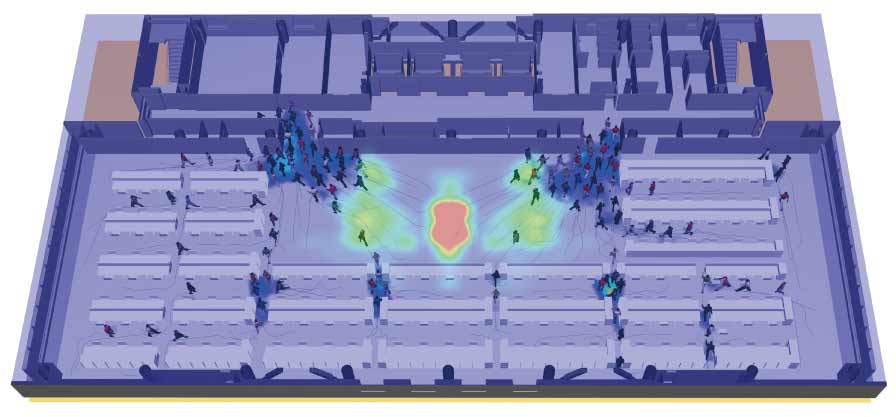 Contour diagram superimposing smoke temperature on evacuation flow distribution
Contour diagram superimposing smoke temperature on evacuation flow distribution
Design for Infection Control
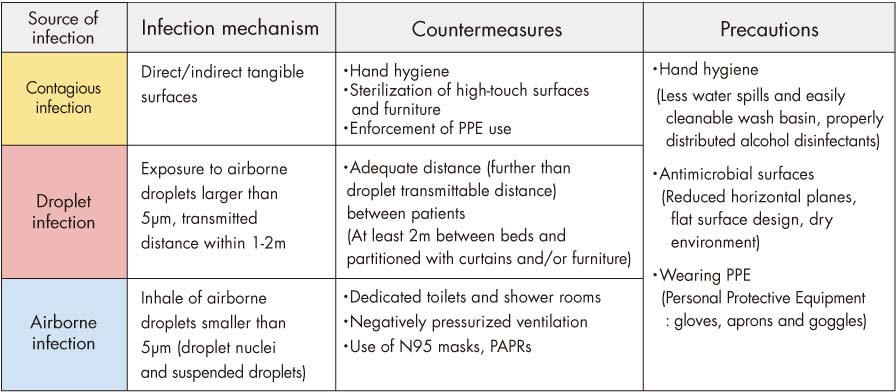 Basic knowledge of infection control
Basic knowledge of infection control
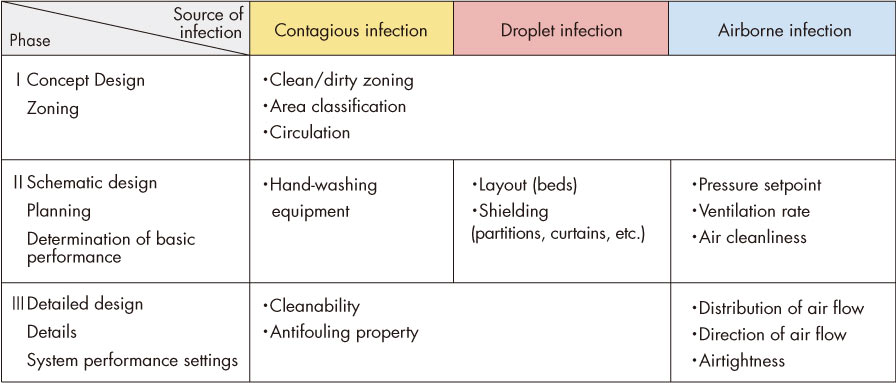 Key points for each design phase
Key points for each design phase
Concurrent Use of BCP and Environmental Technologies
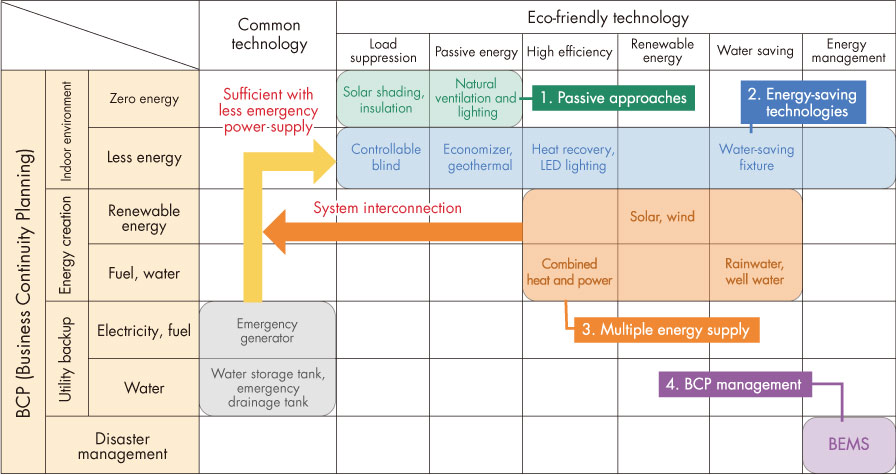 A matrix of environmental and BCP techniques
A matrix of environmental and BCP techniques
Ensure High BCP Performance Through Synchronized Operation of Generators
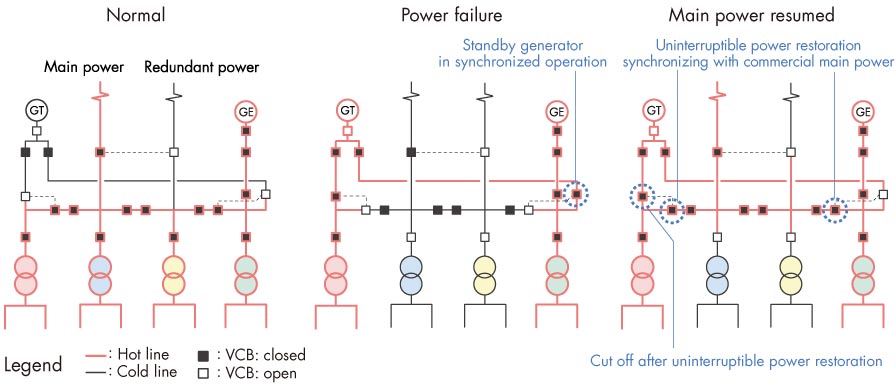 Example of synchronized generator operation
Example of synchronized generator operation
Key Points of Drainage Planning under Disastrous Situations
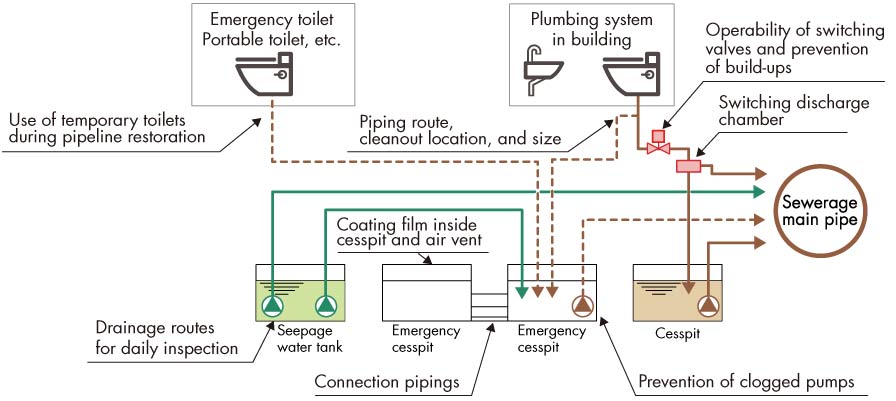 Key points of water drainage planning for disastrous situations
Key points of water drainage planning for disastrous situations
Prevention of Condensation and Mold
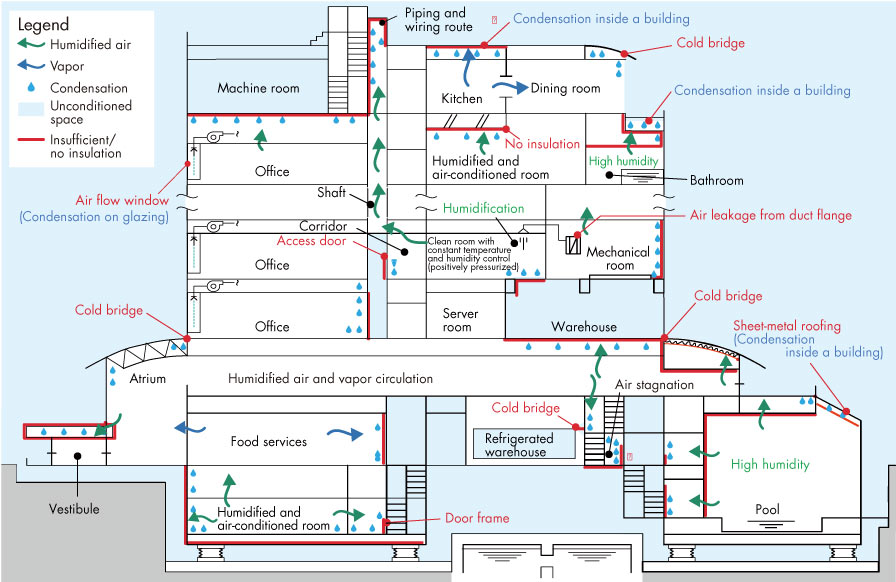 Building parts where condensation frequently occurs in winter
Building parts where condensation frequently occurs in winter